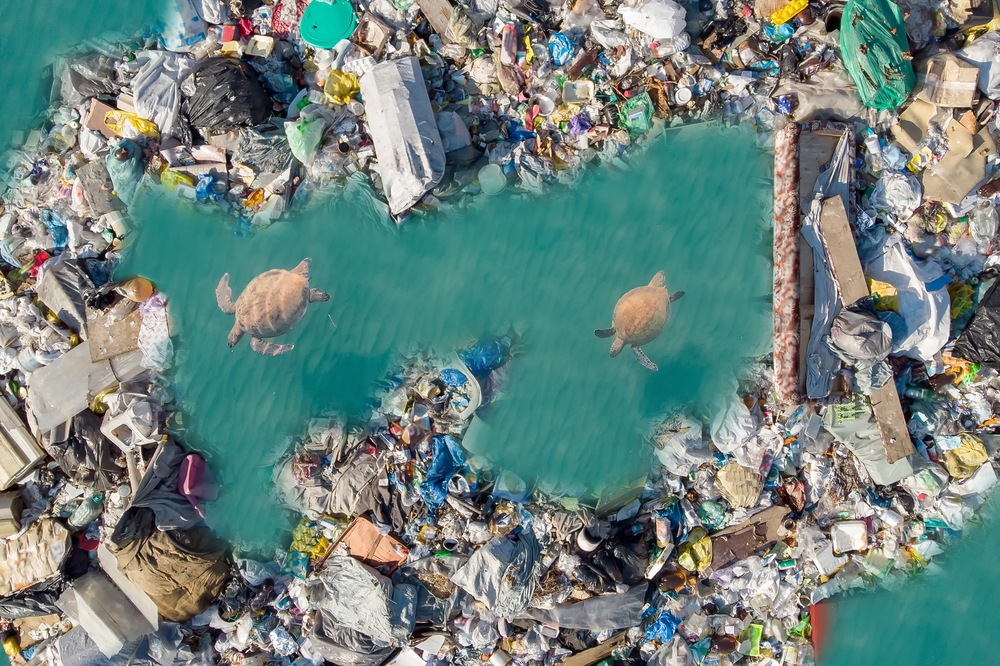Chemists at the University of Copenhagen have developed a method to convert plastic waste into climate solutions for efficient and sustainable CO2 capture.
This effective solution addresses two of the world’s biggest challenges. Plastic pollution and the climate crisis.
As CO2 levels in the atmosphere continue to rise, despite years of political efforts to limit emissions, the world’s oceans are overwhelmed by plastics that threaten the marine environment and ecosystems.
In many cases, major global problems are connected to each other, and solutions to one problem usually create another problem and the clock ticking. But what if multiple problems can be solved at the same time?
Solve plastic waste problems without creating any more
Pet plastic is one of the most widely used plastics in the world, but when it serves its purpose, it becomes an urgent global environmental problem.
This is because it becomes a landfill in many parts of the world and decomposes into contaminated microplastics that spread across air, soil and groundwater. Most of them end up in the ocean.
“The beauty of this method is to solve the problem without creating new methods. By turning waste into raw materials that can actively reduce greenhouse gases, we make part of the solution to the climate crisis part of the environmental issue,” said Margarita Poderite, director of the Department of Chemistry at the University of Copenhagen and the lead author of the study.
This solution is beneficial for both potential global scales that not only end in nature, plastic waste, but also become active players in climate mitigation.
Sustainable, flexible and scalable
New chemical technologies allow researchers to convert pet plastic waste, which has been overlooked by recyclers, into the main resource of new forms of CO2 adsorbents they have developed.
The process can be easily compared to existing carbon capture technologies, as it can “upcycle” into a new material that researchers have dubbed Baeta and efficiently absorb CO2 from the atmosphere.
Once saturated, CO2 can be released through the heating process, which can be concentrated, collected, stored or stored, or converted into a sustainable resource. In fact, researchers hope that the technology will first be exhausted from the chimney in industrial factories and pass through the Baeta unit to clean up CO2.
Poderyte explained: “The main ingredient is plastic waste with an otherwise unsustainable afterlife, and when chemical conversion occurs, the synthesis we use is gentler than other materials for CO2 capture, as it can be synthesized at ambient temperature.”
Jiwoong Lee, an associate professor at the Department of Chemistry, who co-authored the study, added: “One of the impressive things about this material is that it has been effective for a long time. It is flexible. This type of resistance to high temperatures allows exhaust to be used on the edges of hot industrial plants in general.”
From labs to actual use
Potentially innovative ideas, proven methods and effective finished products make researchers ready for the next step.
“We see great potential for this material not only in our labs but in real-life industrial carbon capture plants. The next big step is to expand to produce material in tons. We are already working to attract investment and make the invention a financially sustainable business venture,” Poderite said.
“If we can get highly decomposed pet plastic floating in the world’s oceans, it will be a valuable resource for us as it is very suitable for upcycling in our way.”
Researchers hope that their inventions will help fundamentally change the way climate and environmental issues are viewed as separate issues.
“We’re not talking about independent problems, nor are solutions. Our materials can create very specific economic incentives to clean up the ocean of plastic,” concluded Lee.
Source link

